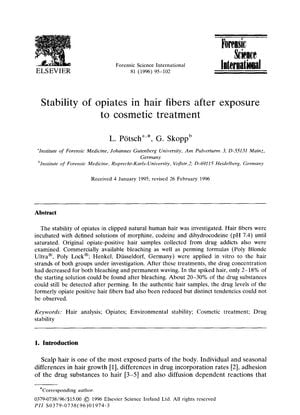Stability of Opiates in Hair Fibers After Exposure to Cosmetic Treatment
August 1996
in “
Forensic Science International
”

TLDR Cosmetic treatments like bleaching and perming can greatly reduce opiate levels in hair, possibly leading to false-negative drug tests.
In the 1996 study, researchers examined how cosmetic treatments like bleaching and perming affect the stability of opiates (morphine, codeine, and dihydrocodeine) in human hair. They tested both hair fibers artificially spiked with opiates and authentic samples from 14 drug addicts. Results showed a significant decrease in opiate levels post-treatment, with bleaching leaving only 2-18% of the original concentration and perming leaving 20-30%. The study concluded that such cosmetic treatments could cause opiates to be present at very low or undetectable levels, potentially leading to false-negative results in drug tests. The authors recommended considering additional information and morphological examinations before conducting hair analysis and suggested that evidence of cosmetic treatments or severe hair damage might necessitate excluding hair samples from forensic toxicology testing.
